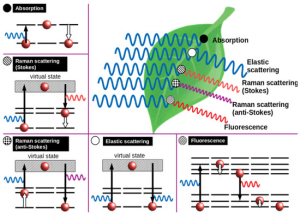
Cavaco AM, Utkin A B, Marques da Silva J, Guerra R .
As a result of the development of non-invasive optical spectroscopy, the number of prospective technologies of plant monitoring is growing. Being implemented in devices with different functions and hardware, these technologies are increasingly using the most advanced data processing algorithms, including machine learning and more available computing power each time. Optical spectroscopy is widely used to evaluate plant tissues, diagnose crops, and study the response of plants to biotic and abiotic stress. Spectral methods can also assist in remote and non-invasive assessment of the physiology of photosynthetic biofilms and the impact of plant species on biodiversity and ecosystem stability. The emergence of high-throughput technologies for plant phenotyping and the accompanying need for methods for rapid and non-contact assessment of plant productivity has generated renewed interest in the application of optical spectroscopy in fundamental plant sciences and agriculture. In this perspective paper, starting with a brief overview of the scientific and technological backgrounds of optical spectroscopy and current mainstream techniques and applications, we foresee the future development of this family of optical spectroscopic methodologies.
Doi: 10.3390/app12030997
Cavaco AM, Utkin A B, Marques da Silva J, Guerra R (2022) Making Sense of Light: The Use of Optical Spectroscopy Techniques in Plant Sciences and Agriculture. Applied Sciences, 12(3), 997. doi: 10.3390/app12030997



